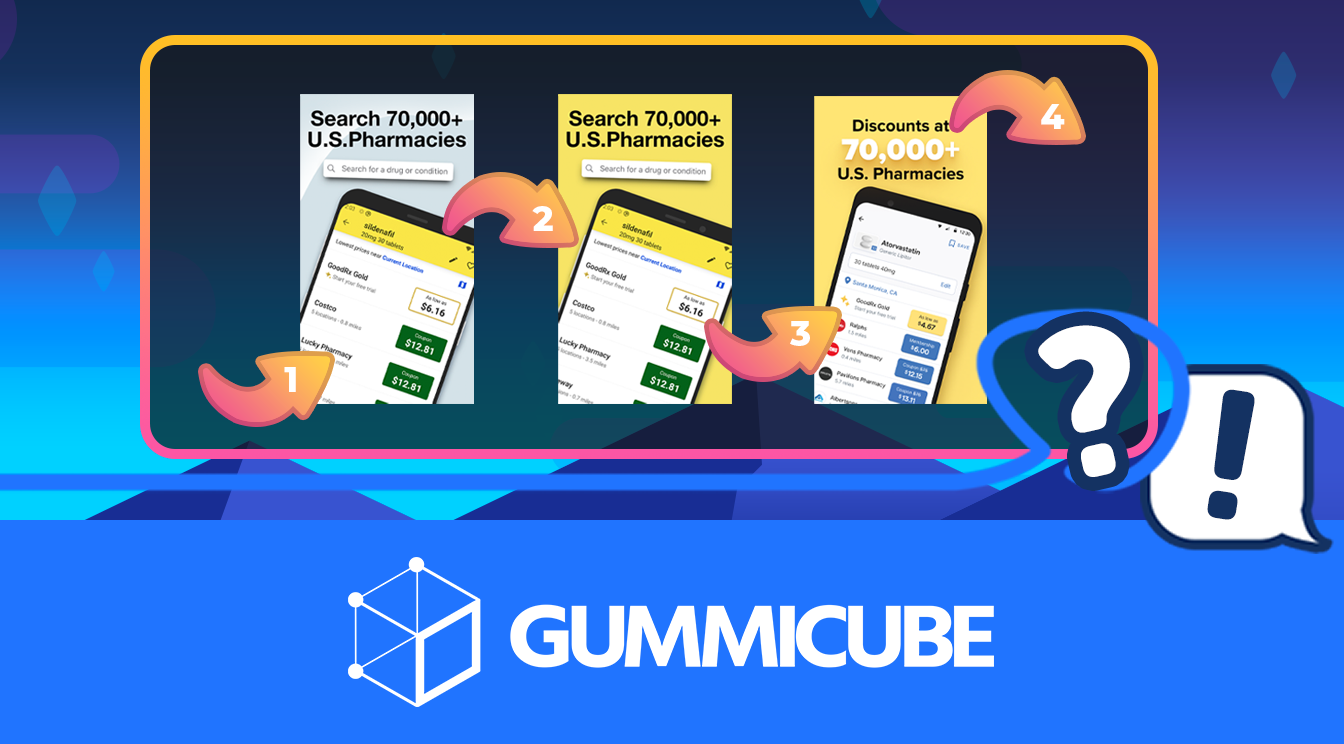5 Best Practices for Apple Search Ads
July 3rd, 2024


by David Bell
CEO at Gummicube, Inc.
There’s no arguing that Apple Search Ads (ASA) has helped developers reach more potential users since it launched in 2016. Over 70% of App Store visitors use search to discover apps and 65% of all downloads come directly from search, only further proving how much paid search can help app growth.
Even though Search Ads has proven to be beneficial, there are many pitfalls that developers can face when running their campaigns. In order to avoid these mistakes, developers have to follow best practices to expand their opportunity to grow their app’s conversion rate.
Give App Ad Campaigns Time
Nothing will be perfect the first time around, and developers may feel tempted to make immediate changes to help improve an ad’s performance. Making changes shortly after launching a campaign can actually hurt its performance instead of help it.
Upon campaign launch, bids and budget should be left alone for at least one week while the algorithm goes through a learning phase. This way Apple can learn what terms are performing best (or worst) and adjust various ad cycles that will give more accurate results on how users are responding to the ads.
By allowing Apple’s algorithms to perform these adjustments uninterruptedly, it can identify which terms are most relevant to your app, begin to rank your app for them, and aid your organic rankings as well.
Search Ad Optimization
While Apple creates ads based off the app’s existing metadata and creatives, it’s important that developers understand that the same ad may not be displayed each time. The various types of Search Ads users may see are:
Icon plus the promotional text
Icon plus first three portrait screenshots (or one portrait preview video and two screenshots)
Icon plus first landscape screenshot (or landscape preview video)
Developers should note that up to three images are used for an ad group. Different sets can be used in separate ad groups to test ad creatives for video vs. image, landscape vs. portrait, different call to actions (CTAs) in the same image, etc.
Apple provides native tools to facilitate ad testing with resources such as Custom Product Pages (CPPs). Developers can leverage Custom Product Pages to create unique experiences tailored to the different demographics being targeted in each ad. For example, one ad campaign might focus on the term “running shoes” while another targets “sportswear”. A developer can create a CPP specific to each term, making for a more relevant experience for the users that search for either one.
Lastly, where ads appear is just as important as any other factor when optimizing Apple Search Ads. It’s important for developers to familiarize themselves with the different placements available for ASA. These are the following:
Creating an ad specific to where it will appear on the App Store is not just essential in improving the overall user experience for those that come across it, but remaining compliant with Apple’s guidelines as well.
Use Discovery Campaign to Test Potential Keywords
Every developer has a list of keywords that they’re targeting, which will be the starting point for their Apple Search Ads campaign. Sometimes developers aren’t sure which keywords to target, so they should utilize a Discovery Campaign, i.e. Search Match, Broad Match, and Exact Match. These match types help developers control how their keywords match user searches and discover new relevant keywords. While each will greatly help developers expand what keywords they target, they should know that they are slightly different.
Search Match: This match type is like research and development (R&D), which is helpful for discovering new and additional keywords. Apple’s algorithm scans the app’s existing metadata and app category to determine what keywords it’s relevant for.
Broad Match: Helps developers identify keywords related to their brand and core features. It uses targeted keywords (brand name, app category, etc.) and also pulls relevant keyword variants (singular, plural, misspellings, synonyms, and related searches and phrases). The keywords are then categorized based on user search terms.
Exact Match: Allows developers to control when the ad appears and the ability to target specific terms and variants (similar to Broad Match). Ads may, however, see fewer overall impressions yet higher tap-through rates (TTR) and conversion due to more specificity of the terms selected.
Understanding and utilizing these match types will help developers discover and test keywords to ensure the best performance.
Optimize App KPIs Based on Keyword Performance
To understand the quality of users driven from any paid user acquisition channel, a developer must first identify their key performance indicators (KPIs). Based on the set KPIs, performance should be determined by diving into their attribution tool to analyze in-app actions to ensure that their marketing dollars are being allocated to quality traffic.
This means that developers can’t judge the quality of keywords at the campaign level but should instead try to break down performance at the keyword level in their ad groups. Developers shouldn't lump all of their targeted keywords into one ad group. Instead, to better help understand how well keywords are performing, they should create individual ad groups based on the app’s features, already targeted keywords, their variations, and more.
Developers will also have to keep in mind their budget when determining these keywords. They’ll need to consider whether they would like to increase their bid or stop a campaign altogether depending on if the campaign is reaching its intended target.
Adjust Search Ads Bids & Budgets
Having the most aggressive bids are important when running Exact Match for keywords. When starting any campaign, developers will first need to initially take the time to set their bids and budgets to make sure that their money is spread out appropriately. To minimize disruption to the algorithm, developers should adjust their bids and budget in increments over time.
For example, let’s say a bid for $1.00 is set up for the high-volume keyword “photo editor.” That might have been the highest bid initially, but others will gradually start placing even higher bids, causing the first developer to adjust the allotted money over time. They should only make these changes based on how well their ads are performing for that particular keyword, not just because they want the highest bid. If their app isn’t relevant for the keyword or isn’t performing well, it’s not a worthwhile endeavor to continue bidding and the campaign should be stopped so they can use that money for other better-performing keywords.
Follow ASA Best Practices to Run Optimized Campaigns
It’s critical for developers to keep these best practices in mind when they’re running their Search Ads campaigns to ensure that they see long-term results. Developers should avoid making immediate changes to their campaigns and instead should opt for letting Apple’s algorithm learn whether the ad is executing and then make any necessary changes over time. They should also constantly monitor keyword performance and make adjustments to their bids and budgets, aggressively targeting relevant high-volume terms and phrases.
In addition to these best practices, developers will need to make sure that they’re also following App Store Optimization (ASO) best practices since Apple pulls all existing metadata and creatives to create ads. Developers will only find success if they combine both strategies to fully optimize their app and ensure that it’s reaching its intended audience.
Similar Articles

Posted on October 6th, 2023
Ghostly happenings are among us... and in your app listing too? If you aren't leveraging the power of app seasonality to make relevant tweaks to your store listing you're leaving precious engagement and conversions on the table.

Posted on November 8th, 2021
Developers on the iOS App Store should plan in advance of the upcoming Holiday Schedule to allow enough time for apps to get approved during the busy holidays.

Posted on November 1st, 2021
App Store Optimization is an involved process that should be regularly revisited based on recent changes in trends. Iteration is one of the key drivers for success in ASO.





